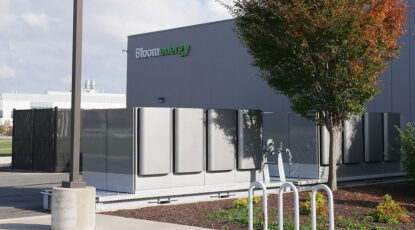How would you keep your business running if you had no electricity for five days or more?
That’s a question every California business leader should be thinking about after the first Public Safety Power Shutoff of the year.
Earlier this month, California’s largest utility, Pacific Gas & Electric Company (PG&E) cut power to tens of thousands of customers in five Northern California counties.
The public safety power shutoffs are part of PG&E’s plan to mitigate the risk of more devastating wildfires, such as those that swept the state in 2017 and 2018. With the utility unable to guarantee the safety of its customers, utility regulators at the California Public Utilities Commission (CPUC) authorized it, and the other two largest energy companies, to pull the plug when conditions indicate fire risk is extremely high.
“The wildfire situation here is dire, and intense, and extremely worrisome.” said California’s Lieutenant Governor, Eleni Kounalakis at our recent ASPIRE Forum. “With 25% of Californians living in areas that are prone to wildfires, people are very concerned… We have a lot of work to do with PG&E in particular. 40% of electricity is delivered by PG&E.”
“They’re saying two to five day outages, and it could happen multiple times a year. How can you run a business?” posed Peter Asmus, Research Director at Microgrid Firm, Navigant. “How can you do things without electricity? We’re becoming more and more electrified.”
Asmus, among other experts in the energy industry, predicts California will turn to microgrids as a solution to keep businesses up and running.
Because microgrids are able to ‘island’ themselves during a power outage, they can ensure the lights stay on during the next preemptive grid shutoff.
Over the past few years, as extreme weather and outages have integrated into the nation’s DNA, there has been a surge in interest for microgrids. Navigant Research has identified this developing trend, with more than 500 new microgrid projects planned or installed in the past six months.
Bloom Energy is at the forefront of that surge. With more than 80 microgrids installed to date, 65% of those have been deployed in the past three years. In 2018 alone, our microgrids delivered more than 500 ‘saves’ for customers when the grid failed.
These ‘saves’ mean more than just keeping the lights on. For large enterprises, it can mean savings of more than $5 million for every hour of downtime. When you start considering multi-day outages, that number climbs to the hundreds of millions. Even a supermarket could see hundreds of thousands of dollars in losses from perishable goods being spoiled by lack of refrigeration.
See how Bloom’s microgrids are helping customers avoid power outages.
California’s New Paradigm: Public Safety Power Shutoffs
Any business who receives electric service from PG&E, San Diego Gas & Electric (SDG&E), or Southern California Edison (SCE) must be prepared for a possible Public Safety Power Shutoff that could keep the lights out for days at a time.
These three utilities have an aggregate service area that covers nearly 125,000 square miles – the equivalent of 75% of California’s total area. It’s likely your business is in the impact zone.
Additionally, CPUC’s recent authorization means all electric lines that pass through high fire-threat areas are prone to shutoff, including both transmission and distribution lines. Since our energy system relies on power lines working together to provide electricity across cities, counties, and regions, nearly every business in the state could be impacted by these proactive outages, even those in urban areas that don’t appear at risk.
To put this into perspective, if a single fire threat area in the Los Angeles region were deemed at “high risk” based on humidity and wind conditions, just a few transmission line shutoffs in that area would impact the entire region shown below. Shutoff zones are not confined to fire threat zones.

The same applies to all urban areas across California, from Sacramento to San Francisco to San Diego.
What’s more, preparing for multi-hour outages or even a full day shutoff isn’t enough; PG&E is warning customers to prepare for outages lasting several days at a time.
During a budget briefing in Sacramento, Governor Gavin Newsom said, “We’re worried about it because we could see people’s power shut off not for a day or two but potentially a week.”
So how can California businesses who rely on consistent, reliable, and 24/7 power to operate, like hospitals, data centers, and high tech manufacturers, survive a five-day outage?
Current Energy Solutions Are Insufficient for Extended Outages
Common solutions that are currently utilized to ride through outages are diesel generators, and solar with battery storage. But as California shifts to its new paradigm of precautionary power shutoffs, so must our energy solutions.
Diesel generators are limited by the amount of fuel reserves a business has on-site, which is typically no more than 72 hours. In the event of a shutoff, hospitals and military take precedent for re-supply, leaving many businesses without access to sufficient fuel.
And that’s notwithstanding the fact that these generators are terrible for air quality; they cause spikes in local air pollution and worsen environmental conditions at times when regions without power are most vulnerable. The Bay Area Air District is asking mayors, city and county government officials, and businesses to be Diesel Free by 33; generators take us strides backwards.
Alternatively, solar plus battery storage is a good option for generating clean energy, however, it isn’t a reliable solution for extended outages. Solar arrays are required to shut down in the event of an outage for both technical and safety reasons. Additionally, even a microgrid with batteries is only meaningful for about four hours, and that’s under the assumption enough solar power was generated from the start.
Neither of these solutions are capable of enduring the extended outages that California’s utilities are warning their customers to expect, which is why businesses are looking to a new solution altogether.
Microgrids Provide True Power Havens
Following the announcement of these power shutoffs, we’ve seen a significant surge in interest for microgrids.
Microgrids with Bloom Energy Servers can be standalone, meaning our Energy Server is the sole generation source during a grid outage, or they can be paired with other distribution technologies, like solar. In both cases, the microgrid is ‘islanded’ from the main electrical grid during an outage and the site is powered through the blackout, even if it lasts for several days.
In addition to providing consistent and reliable energy, microgrids can meet the sustainability needs of businesses and support California’s clean energy goals. They also avoid the safety risk of running high-power lines through wildfire-prone areas and eliminate the need to spend on maintaining or replacing fragile surface lines.
As the most affordable, sustainable, resilient, and safe energy solution, microgrids should be central to the redesign of the California grid. Navigant’s Peter Asmus predicts the wildfires and power shutoffs will make California “the number one state in the country for microgrids.”
Bloom Energy plans to fuel this transition to a cleaner and safer grid and support the state in its quest for energy security.
Learn how a Bloom microgrid can meet your power reliability needs



